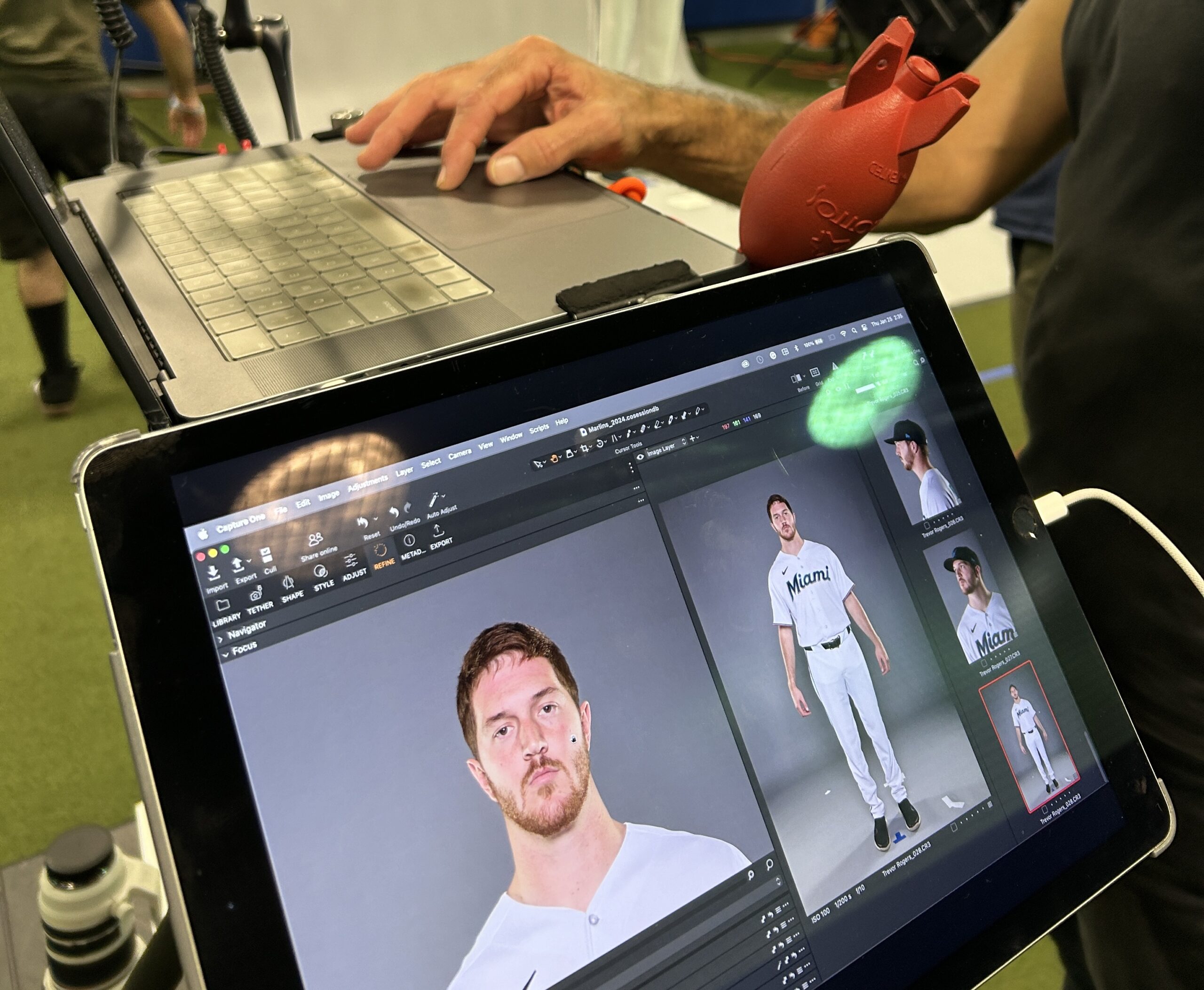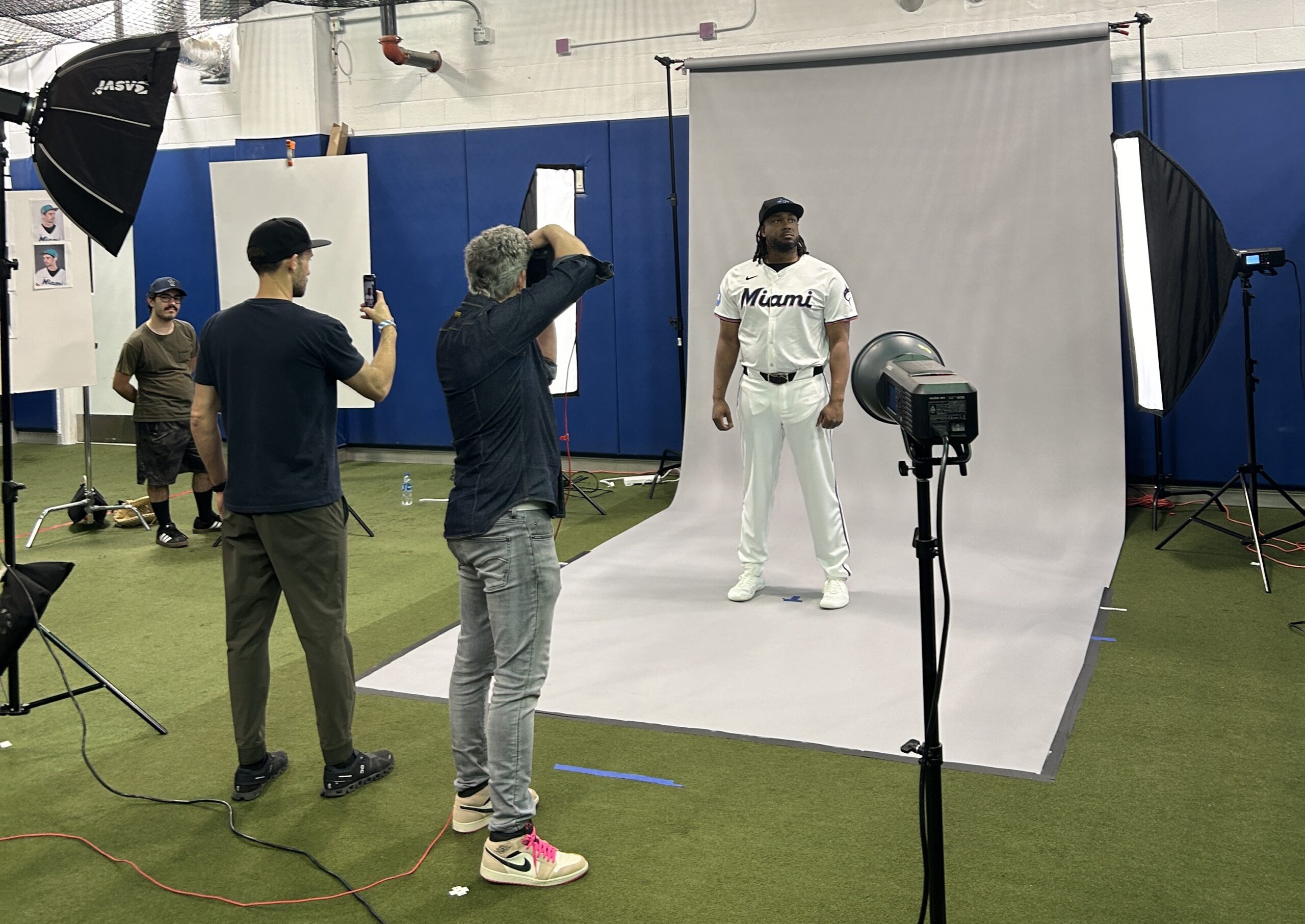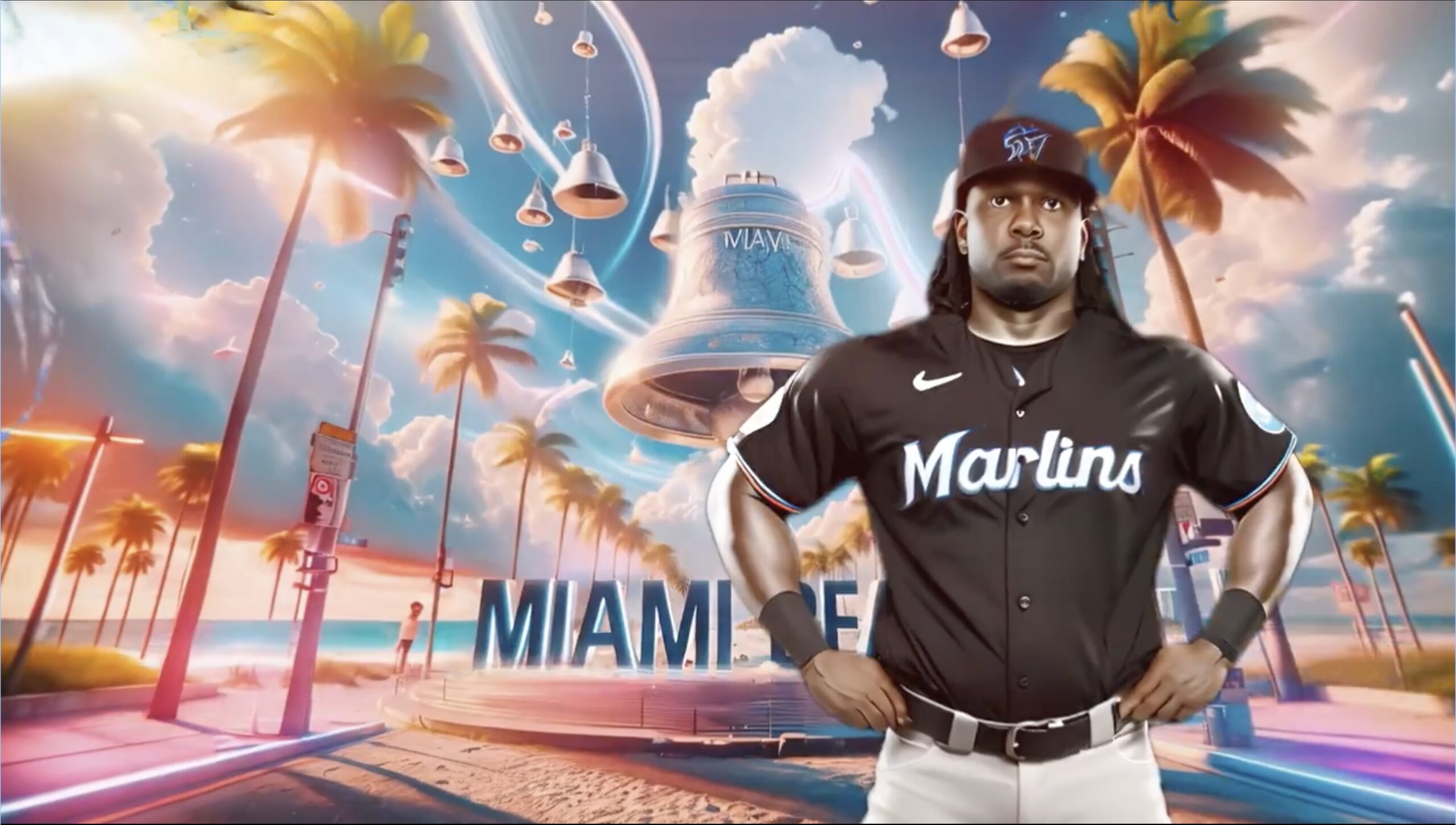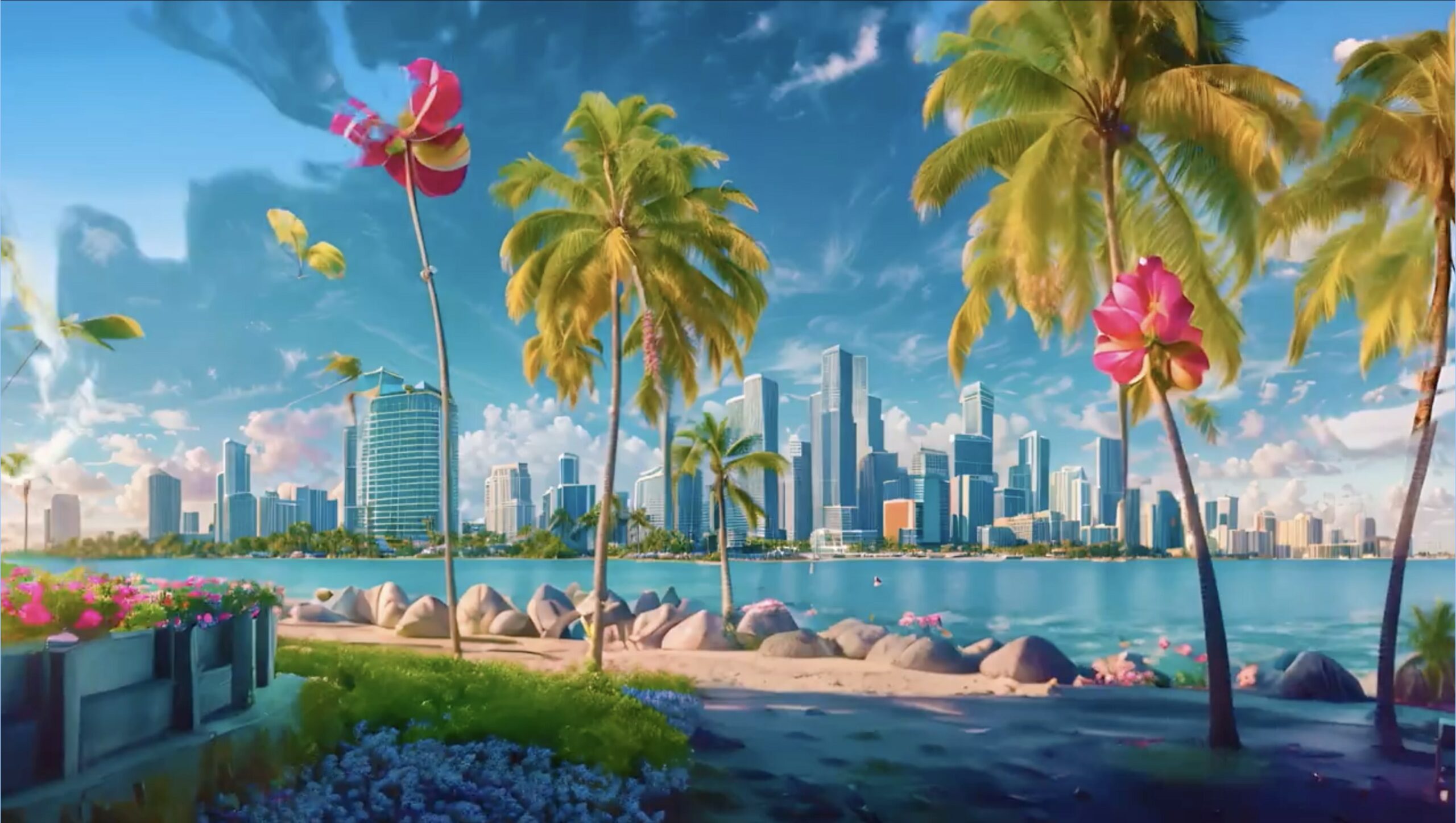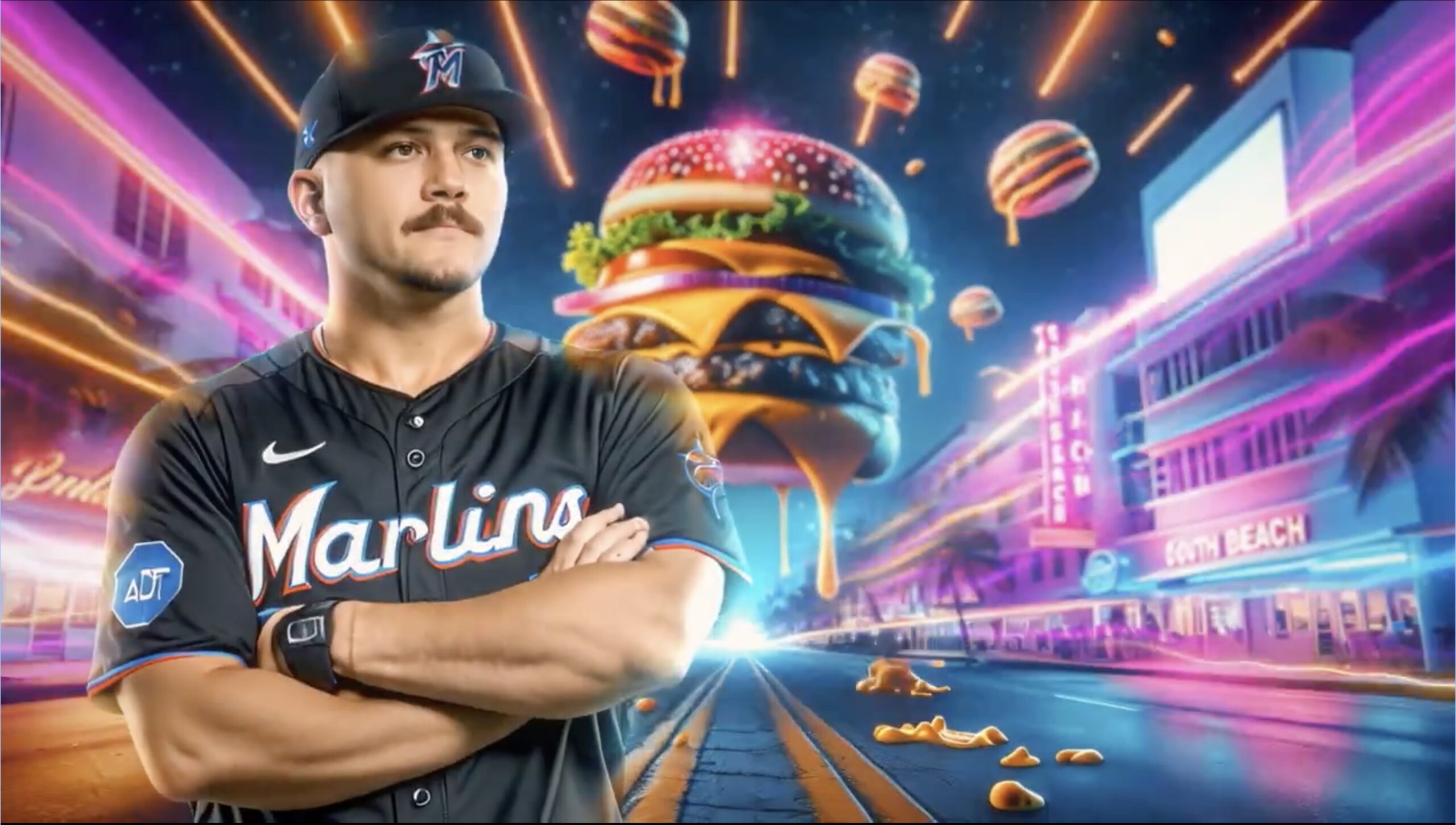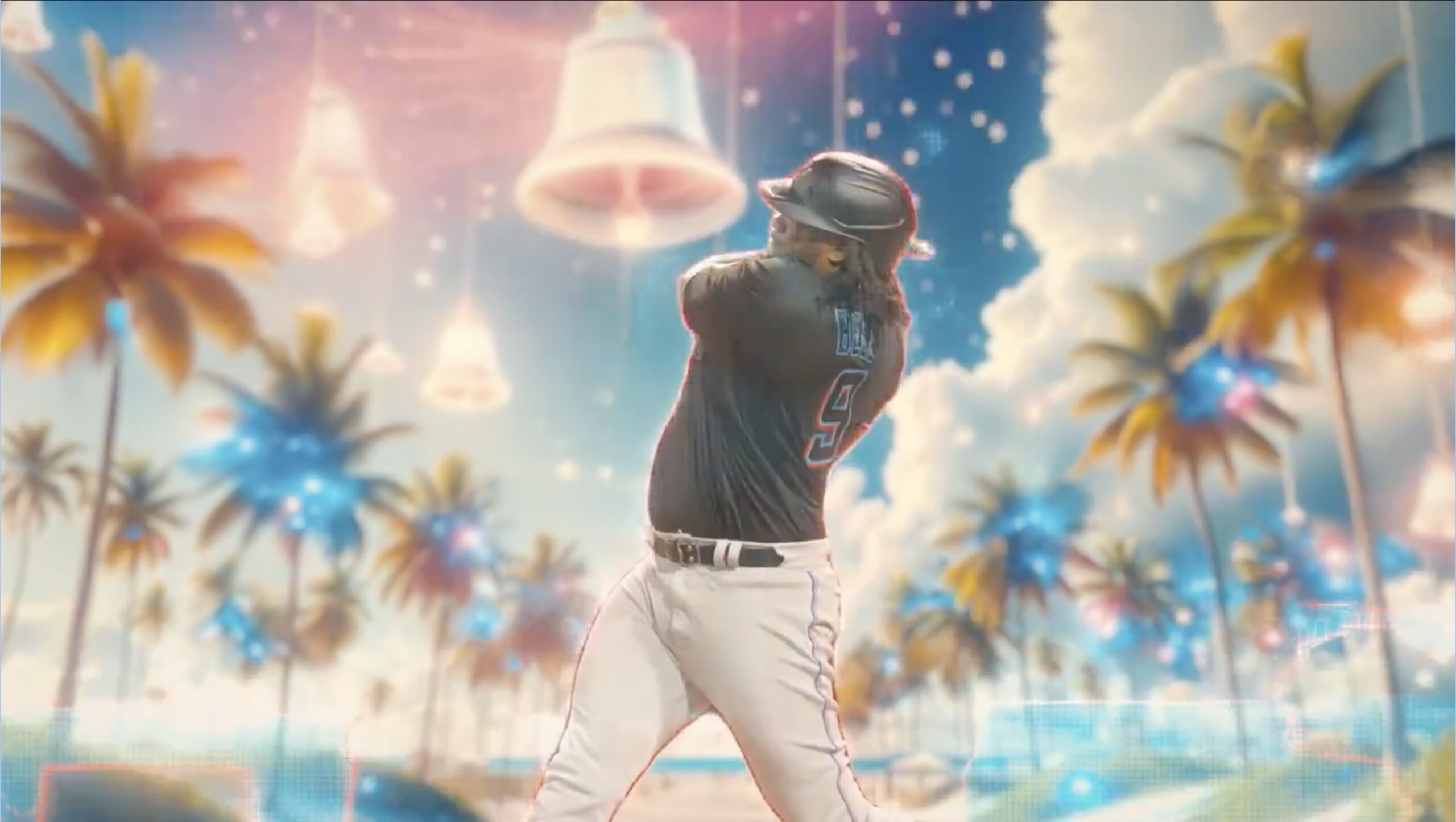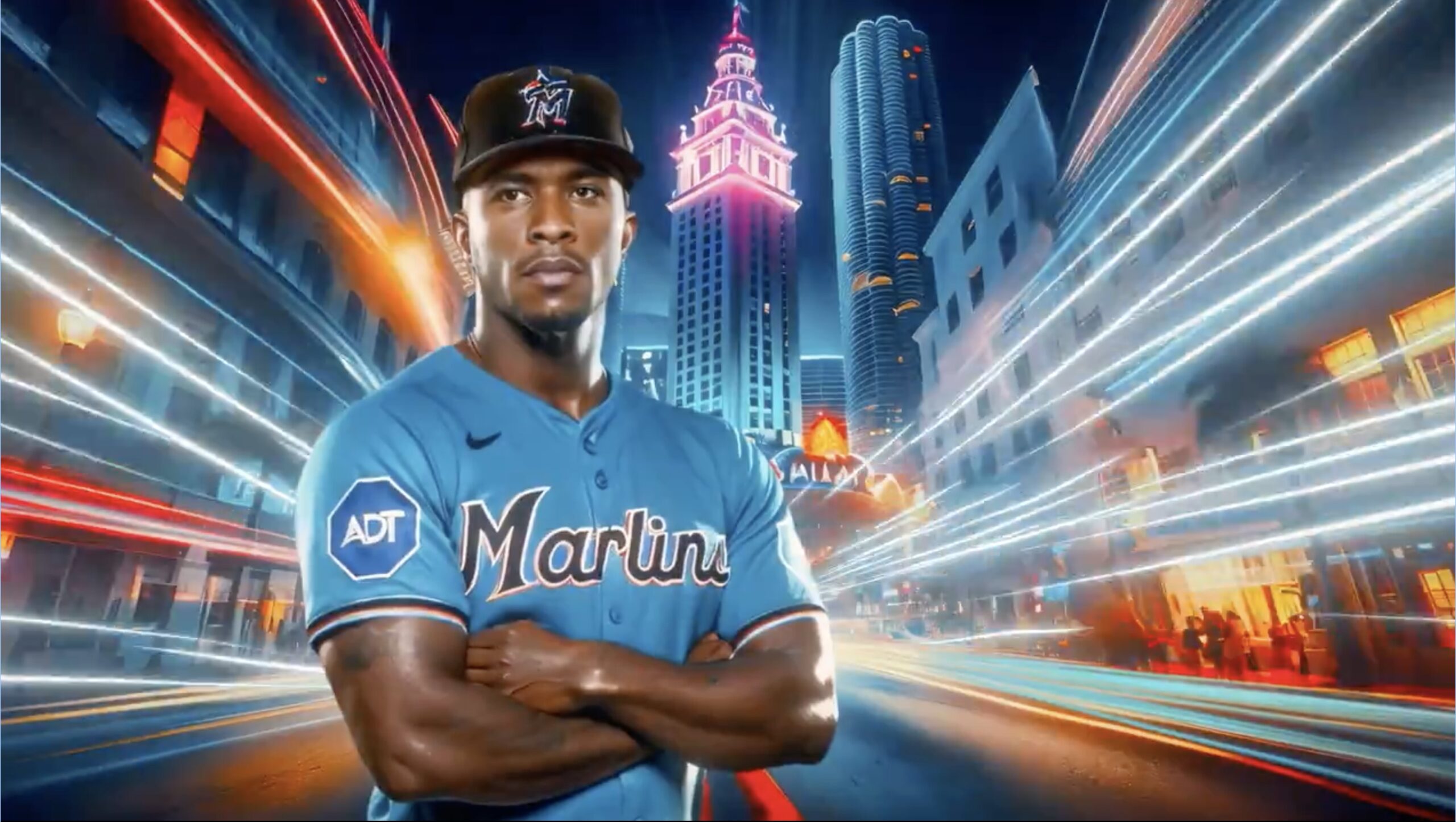Miami Marlins Leap Into Artificial Intelligence With 2024 Team Open
The Famous Group played a pivotal role in its third consecutive project with the club
Story Highlights
Few Major League Baseball clubs play in a city with as much diversity and eclecticism as Miami. With a variety of communities characterized by distinctive flavors and customs, the Marlins’ creative department has a lot of inspiration to draw on. To highlight the 2024 squad on social media, as well as throughout all 81 home games at LoanDepot Park, the organization partnered with The Famous Group to create one of the first intro videos to access the power of artificial intelligence (AI).
“We’re all-in on innovation and doing what other teams haven’t done before,” says Miami Marlins CMO Tiago Pinto. “We’re in a market where our fans are asking for more. We’re an up-and-coming team that had an amazing season last year, so we had no hesitancy diving into this.”
Developing a Roadmap: Creative Team Brainstorms Ideas To Showcase City, Players
At the conclusion of the MLB season, creative teams at all 30 franchises get to work on the next season’s content. One of the biggest items on the to-do list is conceiving a new theme or idea around which the creative material will revolve.
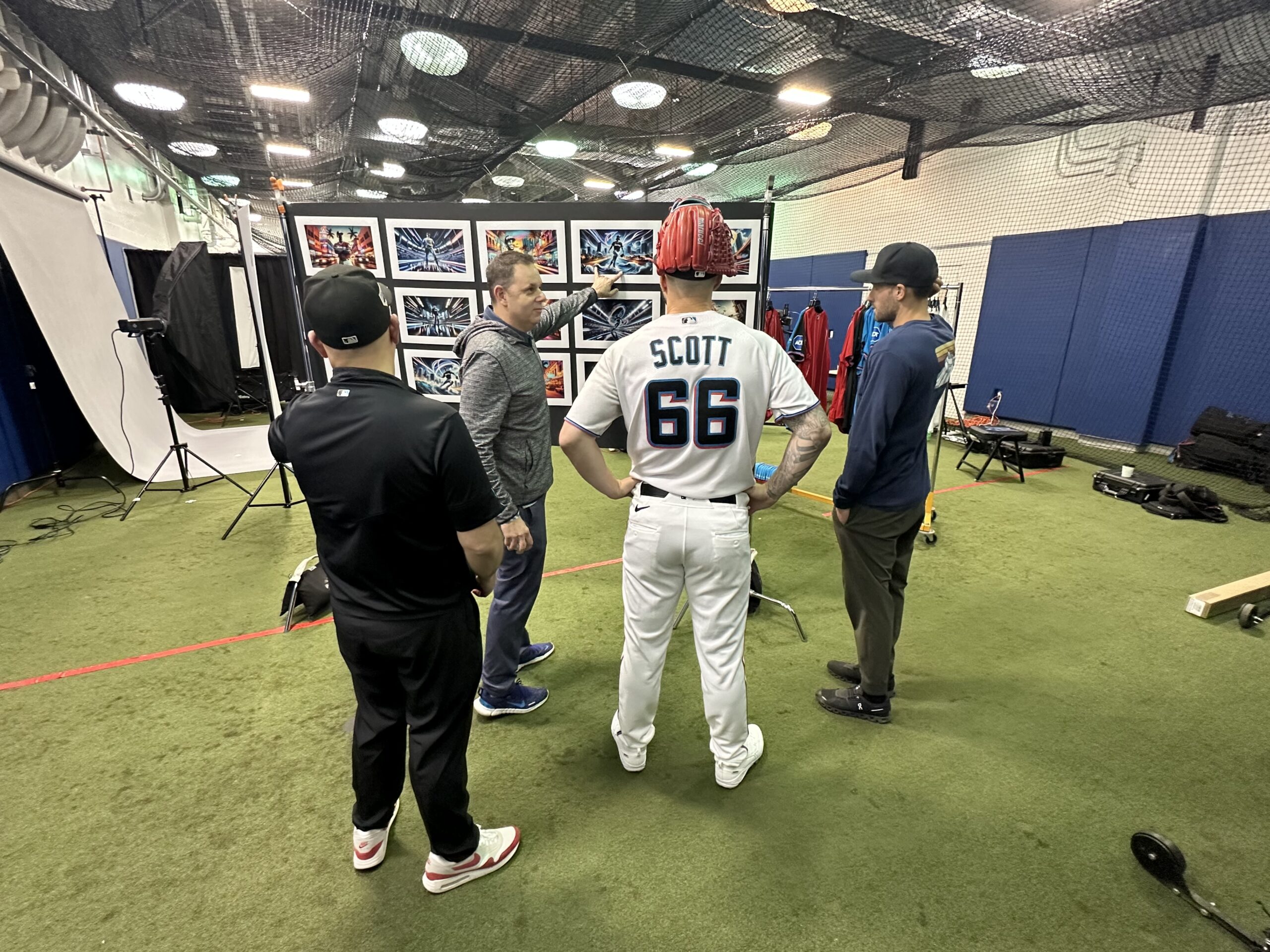
The Famous Group’s Eric Burak (pointing) goes through storyboarding with relief pitcher Tanner Scott.
In Miami, the Marlins have a handful of possible plotlines: the team is coming off its second playoff appearance in four seasons, the roster includes charismatic personalities like centerfielder Jazz Chisolm and 2023 acquisitions first baseman Josh Bell and third baseman Jake Burger, and the club plays in a city famous for its color, electricity, and life. To help with the brainstorming process, the team brought in a familiar partner: The Famous Group. Since 2021, the partnership has produced insanely creative pieces, including last season’s drone-based video with the help of JayByrd Films’ Jay Christensen.
“When we sat down with [The Famous Group] at the end of last year,” says Taylor Bolles, senior director, creative services, Miami Marlins, “we mentioned that we wanted to do something big and continue to push the envelope. They came up with a great pitch that had a couple of ideas, including one with a physical set that would show off the different-color jerseys that we have. One of the last things they brought up was an AI-generated show open. Once we saw that, it was exactly what we were looking for, and we would be one of the first to try it.”
The Famous Group has produced numerous high-profile activations for professional teams. In-venue efforts include the Baltimore Ravens’ flying raven at M&T Bank Stadium, the Carolina Panthers’ prowling panther at Bank of America Stadium, and the NFL 100 All-Time Team seen prior to kickoff of Super Bowl LIV at Miami’s Hard Rock Stadium.
Part of an effort to expand partnerships with enhanced technological offerings, the Marlins’ concept was spurred by the curiosity of Co-Founder/Chief Innovation Officer Greg Harvey. “Greg had shown [me and our team] a few things that he had been exploring with AI,” says Eric Burak, EVP, production, The Famous Group. “I knew I had to share this with Taylor and Tiago. They were more than willing to explore this with us, and it was a great first conversation.”
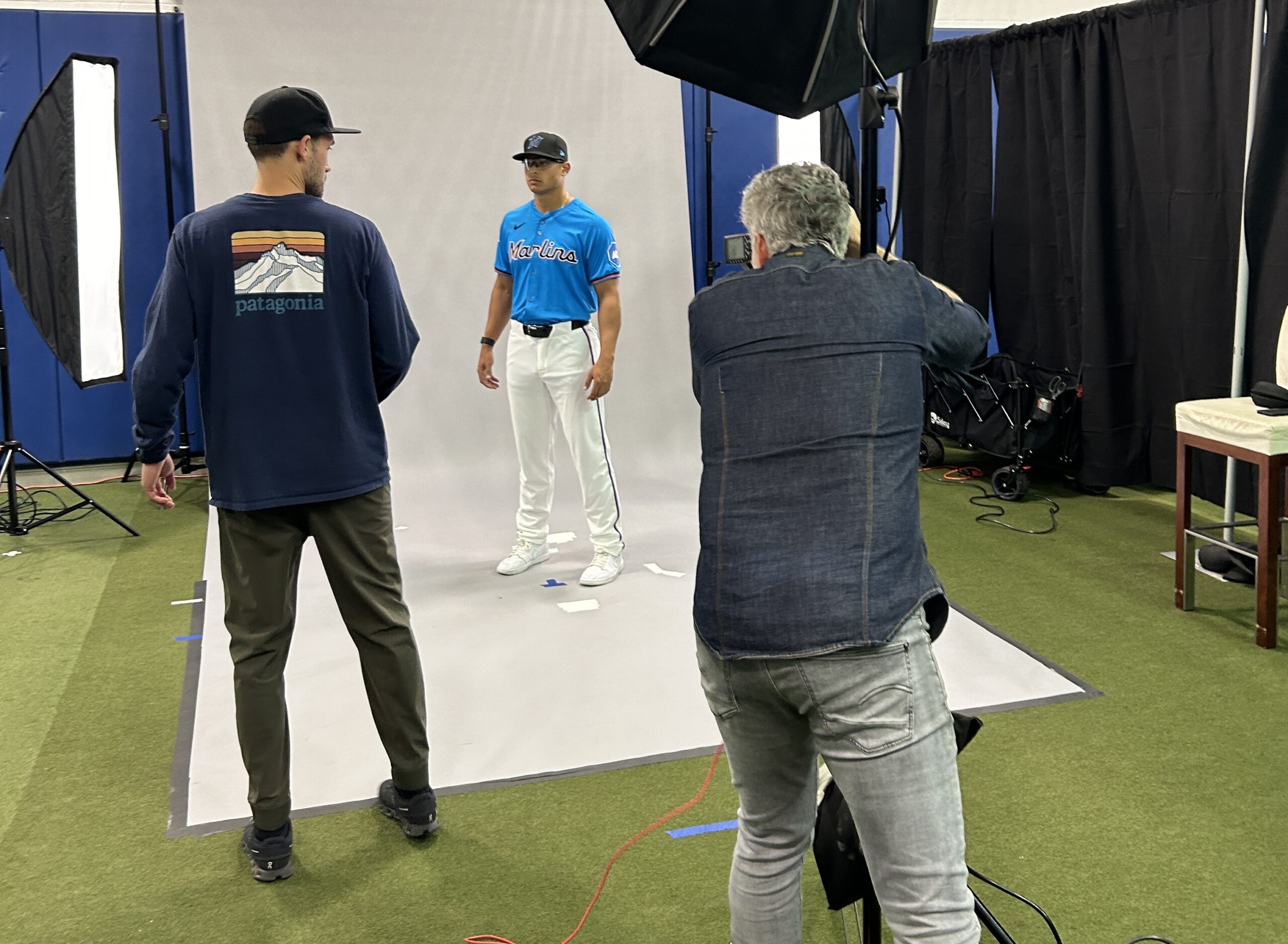
Sports photographer Lucas Noonan takes photos of starting pitcher Jesús Luzardo in the Miami Blue jersey.
Discussions eventually reached the storyboarding phase, which included The Famous Group Creative Director Hemu Karadkar and Lead Editor Steve Davis. Looking to showcase three core ideas — players, jerseys, city — the two parties worked toward combining them into a single hype video. At the core of the piece are the numerous communities that make up the city of Miami.
“For our fans to recognize the strength of our brand, we want to go hyperlocal,” says Pinto. “We’re one of the only teams that don’t have a Latino Night; we dedicate our programming and our scripts to include slang for a Cuban Night, a Puerto Rican Night, a Bahamian Night, and more. We need to show that we understand and relate to that.”
The commitment to culture and authenticity led to the choice of certain vibrant communities. For residents of the city or the specific communities shown in the video, the iconography and nods to the neighborhoods are clearly identifiable: the colorful oceanfront buildings of South Beach, the murals of Wynwood, the rooster sculptures on Calle Ocho in Little Havana, the coffee shops of Hialeah. Also seen in the video are the iconic Freedom Tower, the city’s signature skyline seen from the water, and the instruments that fans bring to the stadium and play on game days. The backgrounds were put together by Miami Marlins Senior Graphic Designer Rachel Suding, assisted by Graphic Designers Kara Schuler and Ezequiel Rabelo.
Without a Blueprint: Marlins Are One of the First MLB Clubs To Tap AI
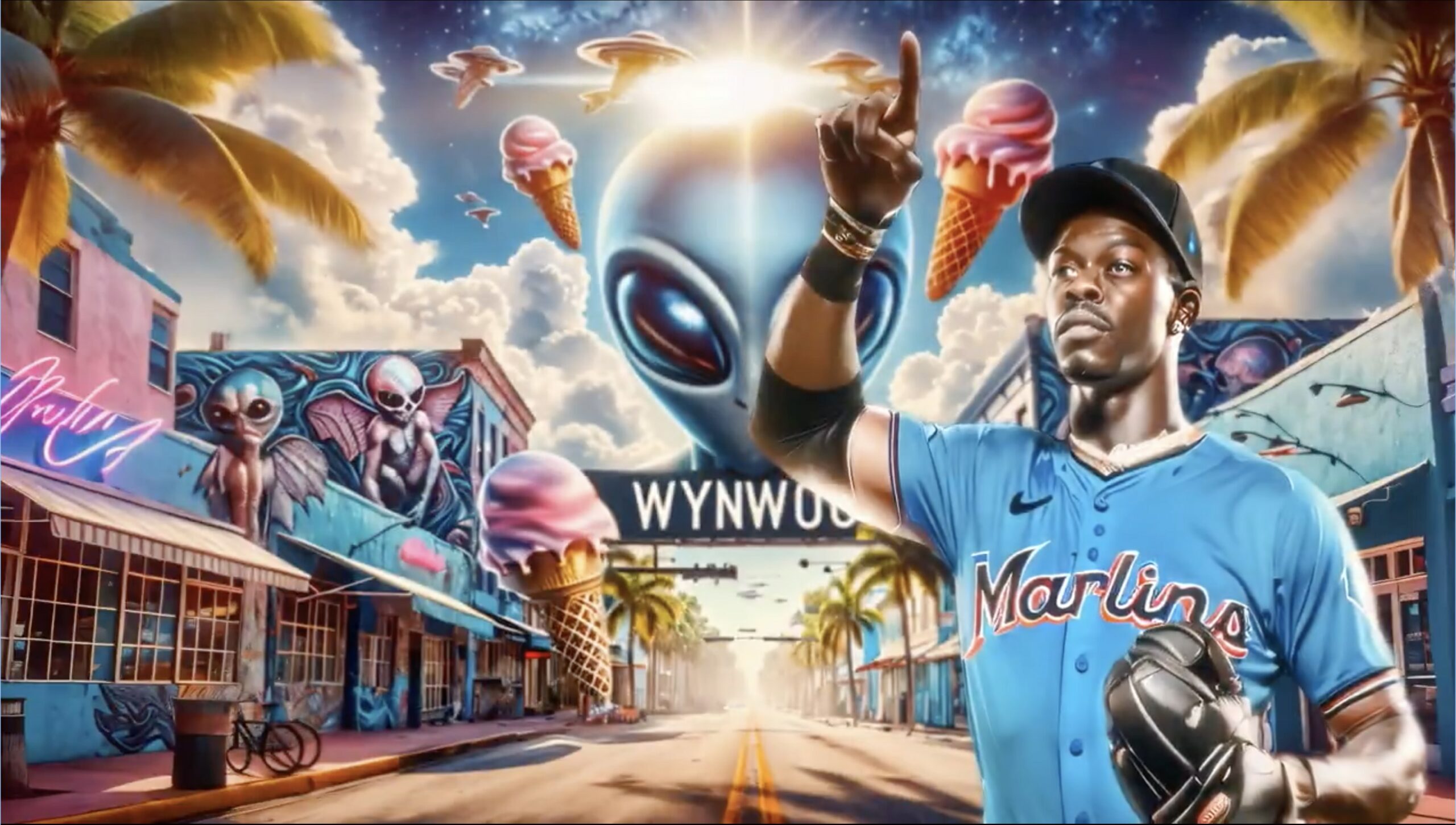
The creative team combined centerfielder Jazz Chisholm Jr.’s love for aliens and ice cream with the murals of Wynwood.
After the AI route was settled on, the team began to feel that the Marlins would be creating the project without a reference point or example to work from. Given the popularity and emergence of AI in the sports-video–production industry, the opportunity to create hyper-realistic visuals intrigued Harvey when he began experimenting with the latest AI tools in October 2023.
“I started generating and animating content,” he says. “I got really excited because I feel like this is the first time in my creative career when I can put what’s in my mind onto a screen. AI has allowed us to create things that would normally take months to do in Photoshop.”
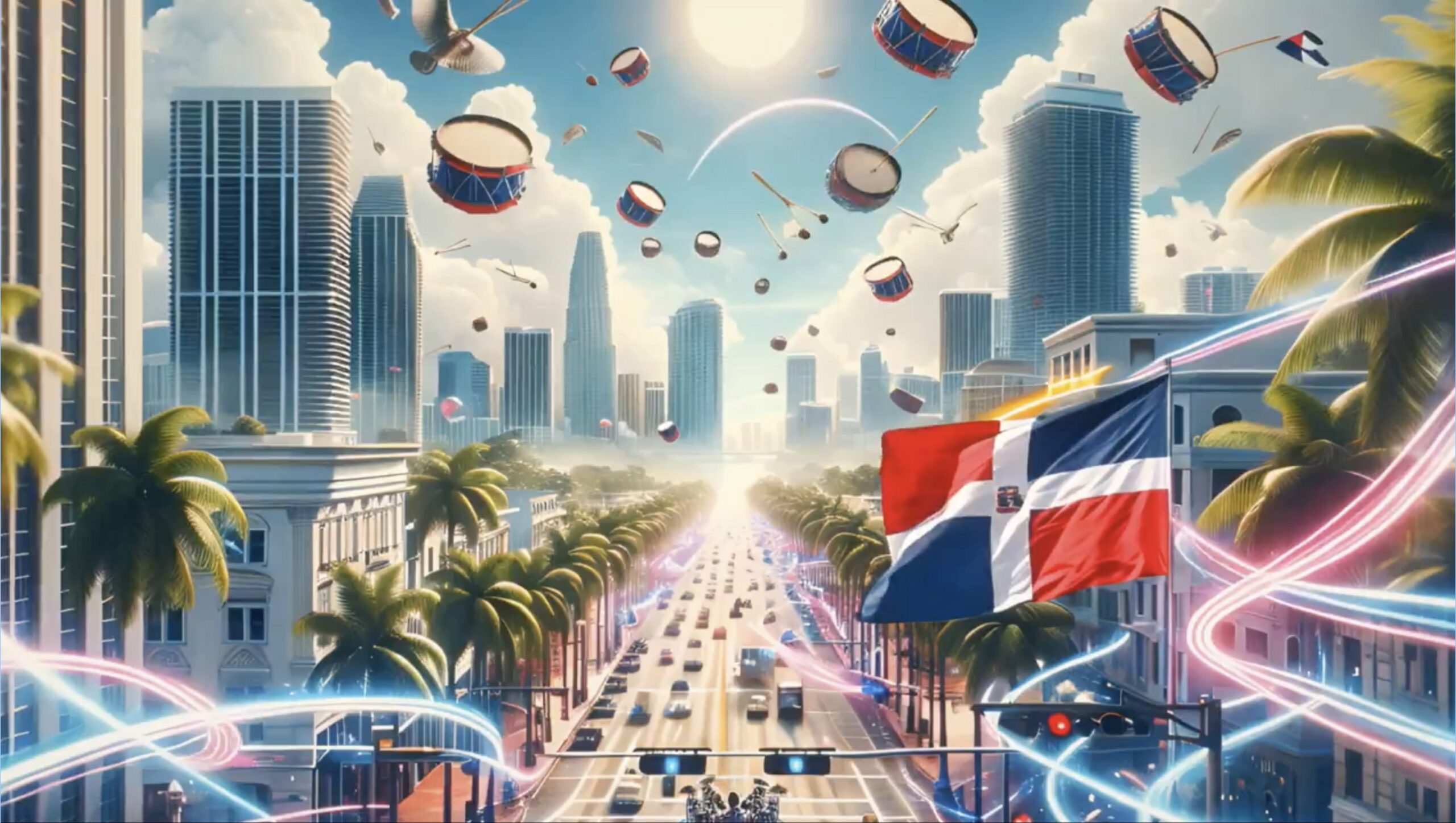
Familiar instruments played by fans in the stands, including drums, was combined with the flag of the Dominican Republic.
Matching the excitement of The Famous Group, the Marlins’ were interested in pioneering this sort of content production in professional sports. Opting for a two-pronged attack, the club and The Famous Group brought their respective creative impulses to the project and forged a common direction.
“It was a big challenge because we knew there wasn’t a blueprint or someone to reach out to for advice,” says Bolles. “[The process] turned into two teams working on the same problem: my team of designers and animators were on one side while The Famous Group worked on the other side.”
Offseason Implementation: Media Day Focuses on Player Headshots
When players returned to the Marlins’ Spring Training facility in Jupiter, FL, it was time to put thought into action. Footage of the players from previous seasons was used for the “real-life” portion of the video, but re-creating the players in the same AI style as the neighborhoods required a good chunk of time photographing the players. Miami Marlins Team Photographer Jasen Vinlove and sports photographer Lucas Noonan, with whom The Famous Group has worked on other projects, took photos of each player in each of the team’s four home jerseys: white, Miami Blue, Midnight Black, and City Connect Caliente Red. Players’ schedules were coordinated with Senior Director, Public Relations and Communications, Jon Erik Alvarez. The end product featured two-time batting champion Luis Arráez, starting pitcher Jesús Lazardo, free agent Tim Anderson, reliever Trevor Rogers, outfielder Jesús Sánchez, Chisolm, Bell, and Burger.
“Our thought process was going to be the starters on the field and our five starting pitchers in the rotation,” says Bolles, “but we had to see how the roster would shake out when we finally hit the field. We had to do a makeup shoot to grab Tim Anderson when we signed him, but we knew the ones we wanted to highlight and get the fans to see them as the heroes of our team. Some shots are fun and name-based: [for example,] there are dripping burgers behind Jake Burger and giant bells behind Josh Bell. Others are more personality-based, like Jazz’s love for aliens and ice cream.”
Luckily, the team bought into the concept right away. “The players were [accustomed] to seeing a whole big set,” says Burak, “but, when we told them that we’d be making them into what you would see in a videogame, they were all-in.”
Training the Tech Engine: AI Had To Learn the Club’s Intellectual Property
Besides capturing the photos during Spring Training, another huge lift was to accurately portray the players and their likeness. With generative AI, the software produces only standard or non-specific material. Because of typical copyright restrictions or other legal constraints, platforms like OpenAI’s DALL-E, Stability AI’s Stable Diffusion, and DaVinci AI’s Midjourney are unable to replicate intellectual property (IP). To make Josh Bell look like Josh Bell and the Freedom Tower look like the actual building in detail, Harvey and the team put the software through its paces and fine-tuned its results.
“We needed to train our own models and generate the correct IP, which included the Marlins’ logos, hats, jerseys, and players’ likeness,” says Harvey. “To figure out the right combination of what we shot with the players on Media Day and what footage and stills we could get from previous games, we utilized about 700 total images that resulted in 30 final models.”
The Famous Group worked with Encore Co-Founder/CEO Jonathan Gray during this portion of the project. The use of AI allowed a concept of this magnitude to be completed before the March 28 deadline, Opening Day vs. the Pittsburgh Pirates. It comprised not only a photo-realistic version of each player but also the compositing of drone footage and a zoomed-in image of the stadium captured on Google Earth.
“Using a traditional production pipeline would’ve been an unbelievable lift,” notes Harvey, “and [the project] wouldn’t have looked like it does now. AI is like any other tool, but, when you leverage it in the right way, you can get things that people just haven’t seen before.”
Evergreen Content: AI Allows Interchangeable Jerseys, New In-Venue Graphics
Unlike with most videos, whose internal elements can’t be altered, with AI, the Marlins are able to swap out and change details whenever they want. With two models for each player and a model for each of the four home jerseys, the content can match any theme night hosted at the stadium or reflect the jerseys the team is wearing on the field.
“We didn’t have to shoot every player in all four jerseys,” Harvey points out. “Once the [concept of each] jersey is trained, we were able to match any player with any jersey on any background and regenerate the content. We also have samples where the AI players were able to talk through a casual conversation that we recorded, and it could be used for promotional giveaways. This [project] is much different from a linear piece of content: the Marlins now have a library of assets that opens up a whole new world for marketing, social media, digital, and in-venue production.”
The approach has been used at LoanDepot Park since Opening Day. The video is played on the main videoboard, but the game-day production team — led by Miami Marlins Director, Event Presentation, Conrad Bradburn — is also using a re-imagined graphics package that leans heavily on the multiple AI backgrounds. This in-venue package was created by Miami Marlins Senior Producer, Motion Graphics, Javier Castellano.
Possibilities for the Future: Project Paves the Way for New Avenues of Creativity
Although this creative piece is driving much of what the Marlins are doing at their home ballpark, its influence is felt across the entire city. For example, in advance of the 2024 regular season, the club promoted Opening Day with advertisements on boats and walls using the AI-themed video. Most notably, manager Skip Schumacher received the AI treatment with a likeness of himself on a traditional billboard. Now that the limits are taken away and the cap is off the proverbial creative bottle, there’s no such thing as blue-sky thinking for the Marlins.
“We’re going to keep learning how to use AI,” says Bolles, “but I think it has already had a huge impact on the creative that we’re putting out, because it breaks the norm of what sports teams generally look like. I think it nails what we’re trying to do to represent our city.”
Even though AI capabilities play a large role, the project’s effectiveness comes down to the tenacity, drive, and skill of the creative team’s staffers. Without the leadership of Pinto, the creative guidance of Bolles, the accomplishments of her staff, and a dash of collaboration by The Famous Group, it wouldn’t have been possible. And the team has its sights on more for every season.
“Whether it’s a floating billboard in the ocean or one seen in the ballpark,” says Pinto, “we want our fans to know that this is the look of the Marlins’ brand. It’s a very competitive market where luxury and sports brands are executing extremely well. It puts the onus on us that, when we go all-in, we have to be ready.”
